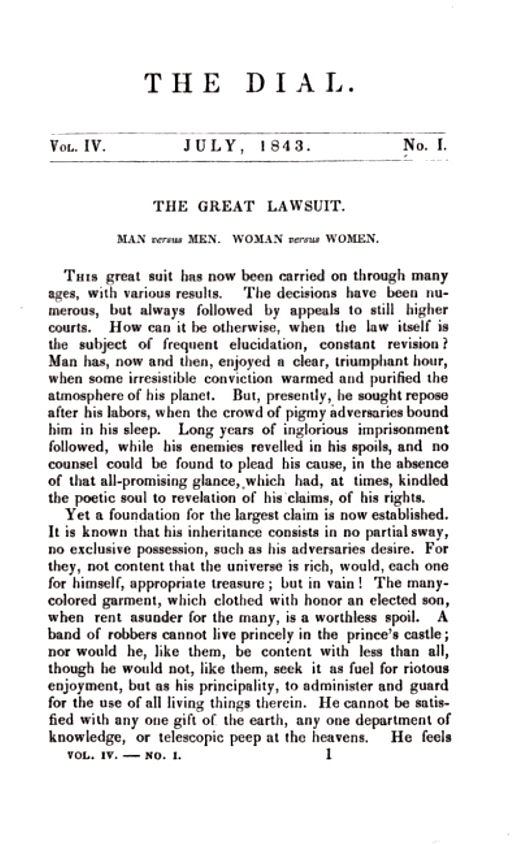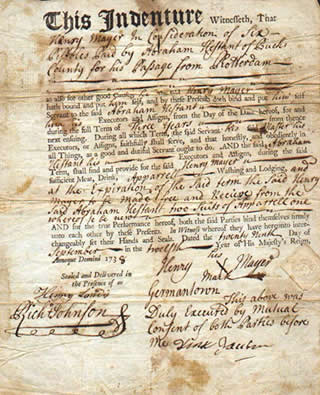|
Death In The Woods
''Death in the Woods'' is a 1933 short story collection by Sherwood Anderson. It was the last of Anderson's books to be published by Boni & Liveright before the firm's financial collapse. Most of the stories in the collection were previously published either in magazines ("Why They Got Married" appeared in the March 1929 issue of '' Vanity Fair'', for example, and "A Meeting South" was first published in ''The Dial'' of April 1925) and books (versions of "Death in the Woods" and "A Meeting South" were included in '' Tar: A Midwest Childhood'' and ''Sherwood Anderson's Notebook'' (both 1926), respectively). According to John Earl Bassett, most of the stories in ''Death in the Woods'' were written between 1926 and 1930 with four preceding that time and one following.Bassett (2005), 69 The Stories The collection is made up of 16 stories: * Death in the Woods * The Return * There She Is—She is Taking Her Bath * The Lost Novel * The Fight * Like a Queen * That Sophistication * In a S ... [...More Info...] [...Related Items...] OR: [Wikipedia] [Google] [Baidu] |
Short Story
A short story is a piece of prose fiction that typically can be read in one sitting and focuses on a self-contained incident or series of linked incidents, with the intent of evoking a single effect or mood. The short story is one of the oldest types of literature and has existed in the form of legends, mythic tales, folk tales, fairy tales, tall tales, fables and anecdotes in various ancient communities around the world. The modern short story developed in the early 19th century. Definition The short story is a crafted form in its own right. Short stories make use of plot, resonance, and other dynamic components as in a novel, but typically to a lesser degree. While the short story is largely distinct from the novel or novella/short novel, authors generally draw from a common pool of literary techniques. The short story is sometimes referred to as a genre. Determining what exactly defines a short story has been recurrently problematic. A classic definition of a short story ... [...More Info...] [...Related Items...] OR: [Wikipedia] [Google] [Baidu] |
Sherwood Anderson
Sherwood Anderson (September 13, 1876 – March 8, 1941) was an American novelist and short story writer, known for subjective and self-revealing works. Self-educated, he rose to become a successful copywriter and business owner in Cleveland and Elyria, Ohio. In 1912, Anderson had a nervous breakdown that led him to abandon his business and family to become a writer. At the time, he moved to Chicago and was eventually married three additional times. His most enduring work is the short-story sequence ''Winesburg, Ohio,'' which launched his career. Throughout the 1920s, Anderson published several short story collections, novels, memoirs, books of essays, and a book of poetry. Though his books sold reasonably well, '' Dark Laughter'' (1925), a novel inspired by Anderson's time in New Orleans during the 1920s, was his only bestseller. Early life Sherwood Berton Anderson was born on September 13, 1876, at 142 S. Lafayette Street in Camden, Ohio, a farming town with a population of ar ... [...More Info...] [...Related Items...] OR: [Wikipedia] [Google] [Baidu] |
Boni & Liveright
Boni & Liveright (pronounced "BONE-eye" and "LIV-right") is an American trade book publisher established in 1917 in New York City by Albert Boni and Horace Liveright. Over the next sixteen years the firm, which changed its name to Horace Liveright, Inc., in 1928 and then Liveright, Inc., in 1931, published over a thousand books. Before its bankruptcy in 1933 and subsequent reorganization as Liveright Publishing Corporation, Inc., it had achieved considerable notoriety for editorial acumen, brash marketing, and challenge to contemporary obscenity and censorship laws. Their logo is of a cowled monk. It was the first American publisher of William Faulkner, Ernest Hemingway, Sigmund Freud, E. E. Cummings, Jean Toomer, Hart Crane, Lewis Mumford, Anita Loos, and the Modern Library series. In addition to being the house of Theodore Dreiser and Sherwood Anderson throughout the 1920s, it notably published T.S. Eliot's ''The Waste Land'', Isadora Duncan's ''My Life'', Nathanael ... [...More Info...] [...Related Items...] OR: [Wikipedia] [Google] [Baidu] |
Vanity Fair (American Magazine 1913–1936)
''Vanity Fair'' was an American society magazine published from 1913 to 1936. It was highly successful until the Great Depression led to its becoming unprofitable, and it was merged into ''Vogue'' in 1936. In the 1980s, the title was revived. History Condé Nast began his empire by purchasing the men's fashion magazine ''Dress'' in 1913. He renamed the magazine ''Dress and Vanity Fair'' and published four issues in 1913. Nast paid $3,000 for the right to use the title "Vanity Fair" in the United States, granted by the magazine ''The Standard and Vanity Fair'', "the only periodical printed for the playgoer and player", published weekly by the "Standard and Vanity Fair Company, Inc", whose president was Harry Mountford, also General Director of the White Rats theatrical union. The magazine achieved great popularity under editor Frank Crowninshield. In 1919 Robert Benchley was tapped to become managing editor. He joined Dorothy Parker, who had come to the magazine from ''Vogue'' ... [...More Info...] [...Related Items...] OR: [Wikipedia] [Google] [Baidu] |
The Dial
''The Dial'' was an American magazine published intermittently from 1840 to 1929. In its first form, from 1840 to 1844, it served as the chief publication of the Transcendentalists. From the 1880s to 1919 it was revived as a political review and literary criticism magazine. From 1920 to 1929 it was an influential outlet for modernist literature in English. Transcendentalist journal Members of the Hedge Club began talks for creating a vehicle for their essays and reviews in philosophy and religion in October 1839.Gura, Philip F. ''American Transcendentalism: A History''. New York: Hill and Wang, 2007: 128. Other influential journals, including the ''North American Review'' and the ''Christian Examiner'' refused to accept their work for publication. Orestes Brownson proposed utilizing his recently established periodical ''Boston Quarterly Review'' but members of the club decided a new publication was a better solution.Von Mehren, Joan. ''Minerva and the Muse: A Life of Margaret ... [...More Info...] [...Related Items...] OR: [Wikipedia] [Google] [Baidu] |
A Midwest Childhood
A, or a, is the first letter and the first vowel of the Latin alphabet, used in the modern English alphabet, the alphabets of other western European languages and others worldwide. Its name in English is ''a'' (pronounced ), plural ''aes''. It is similar in shape to the Ancient Greek letter alpha, from which it derives. The uppercase version consists of the two slanting sides of a triangle, crossed in the middle by a horizontal bar. The lowercase version can be written in two forms: the double-storey a and single-storey ɑ. The latter is commonly used in handwriting and fonts based on it, especially fonts intended to be read by children, and is also found in italic type. In English grammar, " a", and its variant " an", are indefinite articles. History The earliest certain ancestor of "A" is aleph (also written 'aleph), the first letter of the Phoenician alphabet, which consisted entirely of consonants (for that reason, it is also called an abjad to distinguish it fro ... [...More Info...] [...Related Items...] OR: [Wikipedia] [Google] [Baidu] |
First-person Narrative
A first-person narrative is a mode of storytelling in which a storyteller recounts events from their own point of view using the first person It may be narrated by a first-person protagonist (or other focal character), first-person re-teller, first-person witness, or first-person peripheral. A classic example of a first-person protagonist narrator is Charlotte Brontë's ''Jane Eyre'' (1847), in which the title character is also the narrator telling her own story, "I could not unlove him now, merely because I found that he had ceased to notice me". This device allows the audience to see the narrator's mind's eye view of the fictional universe, but it is limited to the narrator's experiences and awareness of the true state of affairs. In some stories, first-person narrators may relay dialogue with other characters or refer to information they heard from the other characters, in order to try to deliver a larger point of view. Other stories may switch the narrator to different cha ... [...More Info...] [...Related Items...] OR: [Wikipedia] [Google] [Baidu] |
Unreliable Narrator
An unreliable narrator is a narrator whose credibility is compromised. They can be found in fiction and film, and range from children to mature characters. The term was coined in 1961 by Wayne C. Booth in ''The Rhetoric of Fiction''. While unreliable narrators are almost by definition first-person narrators, arguments have been made for the existence of unreliable second- and third-person narrators, especially within the context of film and television, and sometimes also in literature. Sometimes the narrator's unreliability is made immediately evident. For instance, a story may open with the narrator making a plainly false or delusional claim or admitting to being severely mentally ill, or the story itself may have a frame in which the narrator appears as a character, with clues to the character's unreliability. A more dramatic use of the device delays the revelation until near the story's end. In some cases, the reader discovers that in the foregoing narrative, the narrator h ... [...More Info...] [...Related Items...] OR: [Wikipedia] [Google] [Baidu] |
Indentured Servant
Indentured servitude is a form of labor in which a person is contracted to work without salary for a specific number of years. The contract, called an " indenture", may be entered "voluntarily" for purported eventual compensation or debt repayment, or it may be imposed as a judicial punishment. Historically, it has been used to pay for apprenticeships, typically when an apprentice agreed to work for free for a master tradesman to learn a trade (similar to a modern internship but for a fixed length of time, usually seven years or less). Later it was also used as a way for a person to pay the cost of transportation to colonies in the Americas. Like any loan, an indenture could be sold; most employers had to depend on middlemen to recruit and transport the workers so indentures (indentured workers) were commonly bought and sold when they arrived at their destinations. Like prices of slaves, their price went up or down depending on supply and demand. When the indenture (loan) was paid ... [...More Info...] [...Related Items...] OR: [Wikipedia] [Google] [Baidu] |
American Short Story Collections
American(s) may refer to: * American, something of, from, or related to the United States of America, commonly known as the "United States" or "America" ** Americans, citizens and nationals of the United States of America ** American ancestry, people who self-identify their ancestry as "American" ** American English, the set of varieties of the English language native to the United States ** Native Americans in the United States, indigenous peoples of the United States * American, something of, from, or related to the Americas, also known as "America" ** Indigenous peoples of the Americas * American (word), for analysis and history of the meanings in various contexts Organizations * American Airlines, U.S.-based airline headquartered in Fort Worth, Texas * American Athletic Conference, an American college athletic conference * American Recordings (record label), a record label previously known as Def American * American University, in Washington, D.C. Sports teams Soccer * B ... [...More Info...] [...Related Items...] OR: [Wikipedia] [Google] [Baidu] |
1933 Short Story Collections
Events January * January 11 – Sir Charles Kingsford Smith makes the first commercial flight between Australia and New Zealand. * January 17 – The United States Congress votes in favour of Philippines independence, against the wishes of U.S. President Herbert Hoover. * January 28 – "Pakistan Declaration": Choudhry Rahmat Ali publishes (in Cambridge, UK) a pamphlet entitled ''Now or Never; Are We to Live or Perish Forever?'', in which he calls for the creation of a Muslim state in northwest India that he calls "Pakistan, Pakstan"; this influences the Pakistan Movement. * January 30 ** National Socialist German Workers Party leader Adolf Hitler is appointed Chancellor of Germany (German Reich), Chancellor of Germany by President of Germany Paul von Hindenburg. ** Édouard Daladier forms a government in France in succession to Joseph Paul-Boncour. He is succeeded on October 26 by Albert Sarraut and on November 26 by Camille Chautemps. February * February 1 – A ... [...More Info...] [...Related Items...] OR: [Wikipedia] [Google] [Baidu] |






